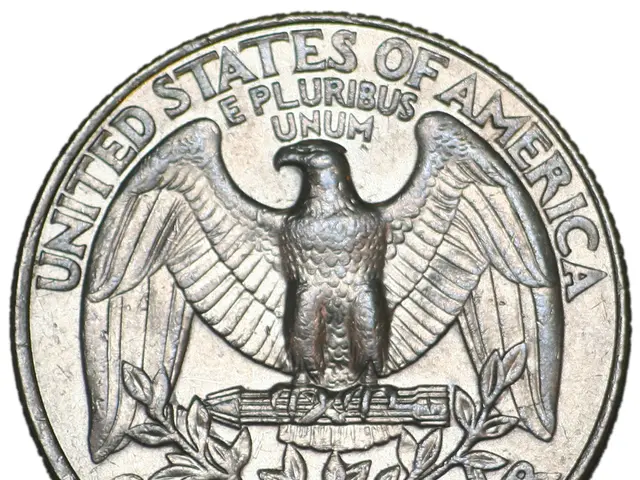Pondering the Possible Demise of American Preeminence and the Emergence of a European Renaissance?
Embrace the Shift: A Multipolar World with China Rising
Welcome to a world in flux, where decades of tranquility have given way to rapid transformation in a matter of weeks. The last couple of weeks have witnessed unprecedented events, and it's safe to say we're living through one of the most tumultuous periods in recent history.
Ever since Donald Trump's Liberation Day declarations, global stock markets have embarked on a rollercoaster ride. After an initial nosedive, the markets experienced a spectacular rebound, marking one of the strongest and speediest recoveries in recent memory.
Although things have temporarily settled, it's essential to remember that we're far from out of the woods. Prices will continue to fluctuate, and it's crucial to prepare for an extended period of instability.
This instability stems from both geopolitical and economic factors. Neil Howe argues in his book "The Fourth Turning Is Here" that we're entering a phase characterized by wars, geopolitical tensions, and the rise of extremist parties. This era typically witnesses the decline of centrist powers and the ascent of fringe parties that many people believe should preside over crucial decisions.
The second major source of uncertainty and volatility is rooted in the economic sphere. We're currently experiencing a period of heightened pressure on globalization, a topic discussed in detail in our book "The New World Economy in 5 Trends" by Koen De Leus and myself.
A Multipolar World Emerges: China Ascends
The world is no longer defined by a single power center focused on the U.S. Welcome to the multipolar world where China is swiftly becoming an economic and military heavyweight. Europe, however, finds itself struggling to maintain unity and remain relevant in this evolving global landscape.
Not long ago, when globalization was at its peak, we observed a shared global business cycle. Even though central banks may have adopted slightly different policies, the overall direction remained consistent. Today, the American and European economies could see varying growth rates, leading central banks to follow distinct monetary strategies. China's economic trajectory will also be influenced by its unique set of policies.
In this new economic reality, think of the major economies as tectonic plates. Instead of moving in the same direction and at the same speed, these plates are now shifting unpredictably at different speeds, paving the way for collisions and extensive volatility in currency and interest rate markets.
According to our book "The New World Economy in 5 Trends," we've entered a new economic paradigm. After the COVID-19 pandemic, we can expect interest rates and inflation to remain persistently high.
Additional Reading:- Investors Rush to U.S. Assets Ahead of Substantive China Trade Talks- China's Exports to the U.S. Dip but Exceed Expectations as Tariffs Bite
The upheavals of today are cyclical and much like waves, they always come and go. We're currently experiencing a massive wave fueled by factors such as colossal debts, aging populations, multi-globalization, and climate change. It's possible that innovation will offer some mitigation and even, in an extreme scenario, counteract the other forces driving this new environment.
Key investment considerations in this volatile landscape:
- Cash will lose its purchasing power with rising inflation.
- Investors should prioritize real assets, including equities, real estate, wine, gold, and silver, as we've only just begun to witness a bull market in these sectors. The commodity space is also set for an extended bull run due to looming supply shortages.
- Companies must implement hedging techniques to navigate an environment marked by higher interest rates, inflation, and volatile commodity prices.
- Countries possess a unique opportunity to excel provided they understand the new economic rules. Those who fail to adapt will struggle to avoid dealing with the "bond vigilantes."
- In 30 years, we may look back on this moment as both the European Renaissance and the end of American Exceptionalism, which would bode well for the euro and European equities. The path to this reality will, however, be long, hard, and winding.
Philippe Gijsels is the Chief Strategy Officer at BNP Paribas Fortis.
Quick Facts:- China is rapidly emerging as a pole of economic and military power, shifting the global balance of power.- This shift invokes both opportunities and challenges for global stability and economic growth.- Investors should focus on real assets, while companies should employ hedging techniques to navigate the new economic landscape.- The road ahead is challenging, but propitious, especially for those countries that adapt to the new rules.
- In the multipolar world as China rises, the geopolitical landscape is truly linked to the state of business and finance, a fact illustrated by the unexpected events of recent weeks.
- The exceptional nature of the current global situation is reflected in the volatile stock markets, as seen in the rollercoaster ride they embarked on after Donald Trump's Liberation Day declarations.
- The geopolitical tensions arising from the shifting balance of power, accompanied by economic challenges related to globalization, contribute to the general-news worthiness of the current period.
- In this new economic reality, significant adjustments are essential for investors, such as focusing on real assets and implementing hedging techniques, as suggested by Philippe Gijsels, the Chief Strategy Officer at BNP Paribas Fortis.
- The changing landscape, where China is becoming an economic and military heavyweight, presents opportunities and challenges for global stability and economic growth, as evidenced by the headlines on LinkedIn.






